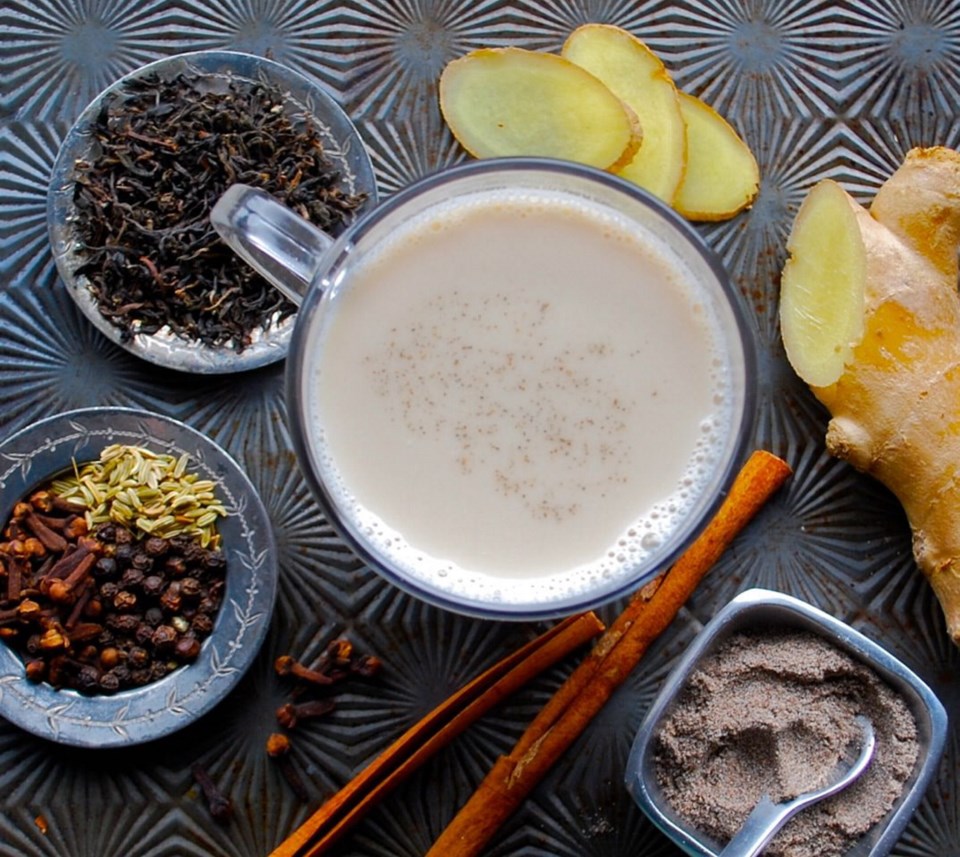What’s the perfect drink to sip on a cool, damp and dreary 91ԭ�� Island day? I would have to say it’s chai.
Its warm milk comforts you, its uplifting tea awakens you and its aromatic spices are curative, making everything seem right, no matter how miserable outside.
Those are pretty impressive qualities for a drink that came to be because the people first making it didn’t follow simple instructions.
For eons in India, there have been brewed concoctions made with spices and herbs that are considered healing beverages.
But chai made with tea, milk and a sweetener was not poured as a recreational beverage in that country until the early 1900s, when a British-owned group operating in India began encouraging more locals to drink tea.
That group was the Indian Tea Association. At that time, Indian-grown tea was mostly exported to Great Britain, because tea was not an everyday drink for most Indians. To change that, the association lobbied large businesses, such as textile mills and factories, to let their workers take tea breaks. They also helped support independent tea vendors, called chai wallahs, to set up shop in busy Indian train stations.
It was suggested that the tea be served English-style, with a bit of milk and sugar. But many tea vendors catered to their customer’s palates by also adding spices to it and increasing the amount of milk and sugar used.
The Indian Tea Association initially disapproved of this practice, because they thought this more diluted version of tea would mean they would sell less of it.
But the opposite happened, because that chai, also called masala chai (masala meaning spice mixture and chai meaning tea), eventually became a very, very popular beverage in India, one that’s now enjoyed around the world.
Because of the organic way chai was first made, with different vendors making their own versions, it’s not surprising that today you’ll find a variety of ways to make it.
In my cookbook library, I found six books — four of which focused on Indian cuisine — that had recipes for chai, and all were different.
The same was true when I researched chai recipes online.
For example, some recipes only used two types of spice — cardamom pods and fennel seeds — while others used those spices and a few others, such as cinnamon, allspice, peppercorns and even saffron.
Some recipes ask you to crush or grind the spices before using them, while others do not.
Some recipes call for fresh ginger, but not all of them. Some recipes use tea bags, others loose tea. Lastly, some recipes ask you to simmer the spices in water for a while, then mix in the tea, milk and sweetener.
Others tell you to put all the ingredients in the pot at the same time and to only use milk.
My recipe for chai blends a few of these techniques. Feel free to adjust it to your taste by, for example, using more or less of the spices called for.
Eric’s Chai
This is my aromatic, nicely spiced version of chai. I like to enjoy it on a rainy day, while snuggled up in a comfy chair.
Preparation time: 10 minutes
Brewing time: About 15 minutes
Makes: two (about 12 oz) servings
2 1/4 cups water
5 to 6 thin slices fresh ginger
1 small cinnamon stick, broken into small pieces
1/8 tsp ground decorticated (husks removed)cardamom, or 3 whole green cardamom pods, crushed
2 or 3 whole cloves
1/8 tsp fennel or anise seeds
1/8 tsp whole black peppercorns (optional)
1 1/2 to 2 tsp loose black tea, or to taste
1 cup homo milk (see Eric’s options)
2 tsp honey or sugar, or to taste
In a small to medium pot, place the water, ginger, cinnamon, cardamom, cloves, fennel seeds and peppercorns, if using.
Set over high heat and bring to a boil.
Reduce heat until mixture gently simmers (small bubbles should just break on the surface).
Simmer spices 10 minutes. Now mix in the tea, milk and honey (or sugar).
Return to a gentle simmer, then let tea heat and steep three minutes, or a little longer if you prefer a stronger tea taste.
Divide and strain the chai through a fine mesh strainer into two cups (see Eric’s options). Serve immediately.
Eric’s options: If you can’t have dairy, try using one cup of coconut milk or rice beverage.
If you want your chai to have a foamy, latte-like top, strain it into another pot after it’s made.
With an immersion (hand) blender, whirl the chai until it’s very foamy on top.
If you don’t have an immersion blender, you could vigorously whip the tea/milk mixture with a whisk in the pot until foamy.
Divide and pour chai between two cups, holding back some of the foam with a spoon when pouring.
Top each cup of chai with that foam, then serve.
Eric Akis is the author of eight cookbooks, including seven in his Everyone Can Cook series. His columns appear in the Life section Wednesday and Sunday.



